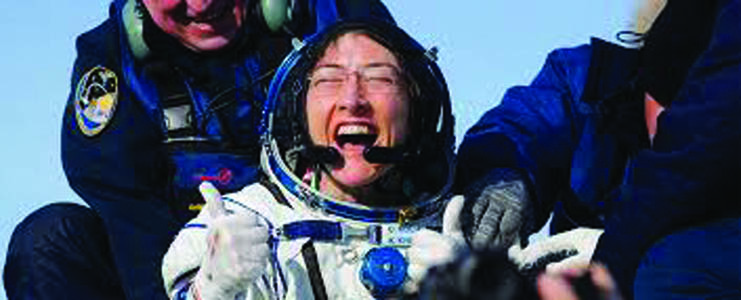NE SCIENCE & TECHNOLOGY BUREAU
How many astronauts can you name without consulting Google or Wikipedia? Neil Armstrong and Buzz Aldrin are easy. They were the first men on the moon. You should probably also remember their Command Module pilot Michael Collins. But he wasn’t one of the first on the moon, so he comes less easily to mind.
Christina Koch, who returned to Earth on Thursday, might be another name you’ll come to remember. She and Jessica Meir executed the first all-woman spacewalk. Although Koch performed six spacewalks during her mission, set a duration record for time in space and contributed enormously to space science, that October spacewalk will be what gets her into history books.
The presence of Koch and Meir on that spacewalk was practically an accident. Nasa has 48 active-duty astronauts, of which 16 are women. The first female spacewalk was supposed to be Anne McClain and Koch last March. But only one suit was available that fit the women, so they had to restaff the spacewalk with a male astronaut.
If the all-female spacewalk had occurred then, McClain, not Koch, would have been its commander. And this essay might instead be about McClain, who would have been first out of the airlock.
With Koch’s return to Earth, she now holds another distinction: the longest stay by a female astronaut in space, 328 days. (Currently, the American record-holder for the longest single stay is Scott Kelly, with 342 days in space, and the record-holder for cumulative time is Peggy Whitson with 665 days spread over three flights.) While we celebrate the records Koch now holds, the achievements that come directly from her efforts are less heralded.
She conducted research in microgravity on Mizuna mustard greens, examining the role of gravity and space on whole-plant health, cellular development and tissue growth. Perhaps most importantly, she also looked at how growing plants affects human community. Humans bond over food, and being able to grow food in space could be important to social dynamics during future longduration crewed missions to the moon or Mars.
But those records are important because they signal a change. We note the first allfemale spacewalk because it is a threshold. Koch and Meir also participated in the second and third all-female spacewalks. There will be others, and they will not be noted, because the threshold we’ve crossed leads us into a future where women in space are not the exception. Courtesy: NYT News Service












